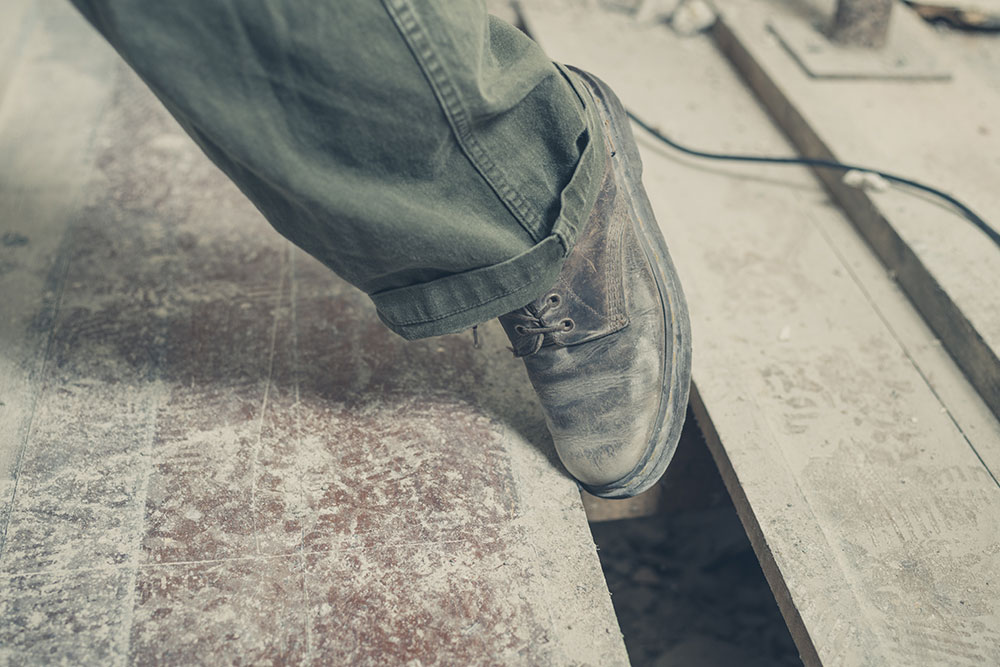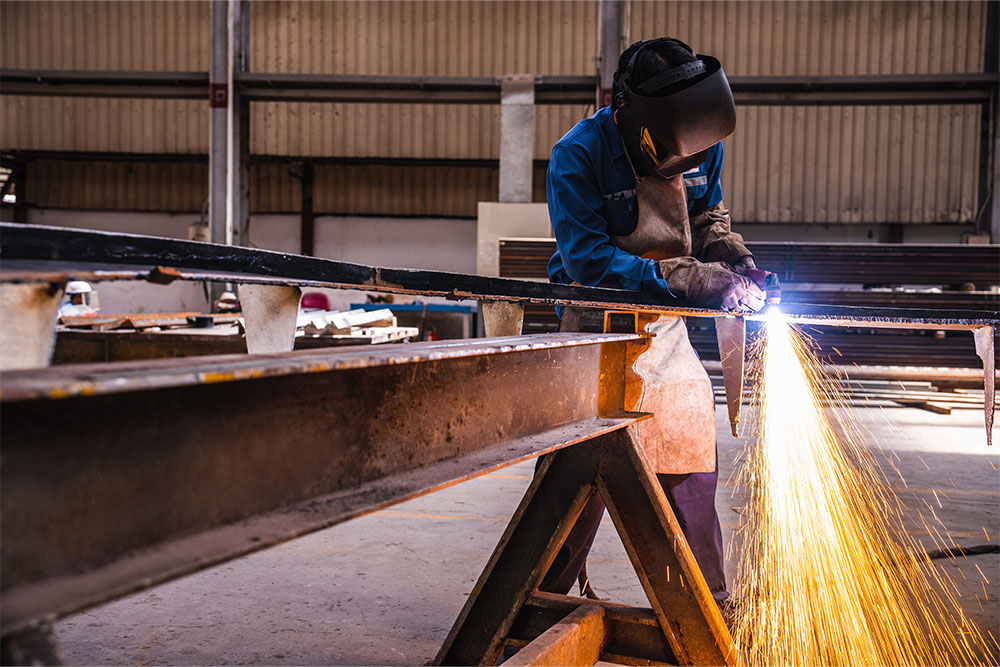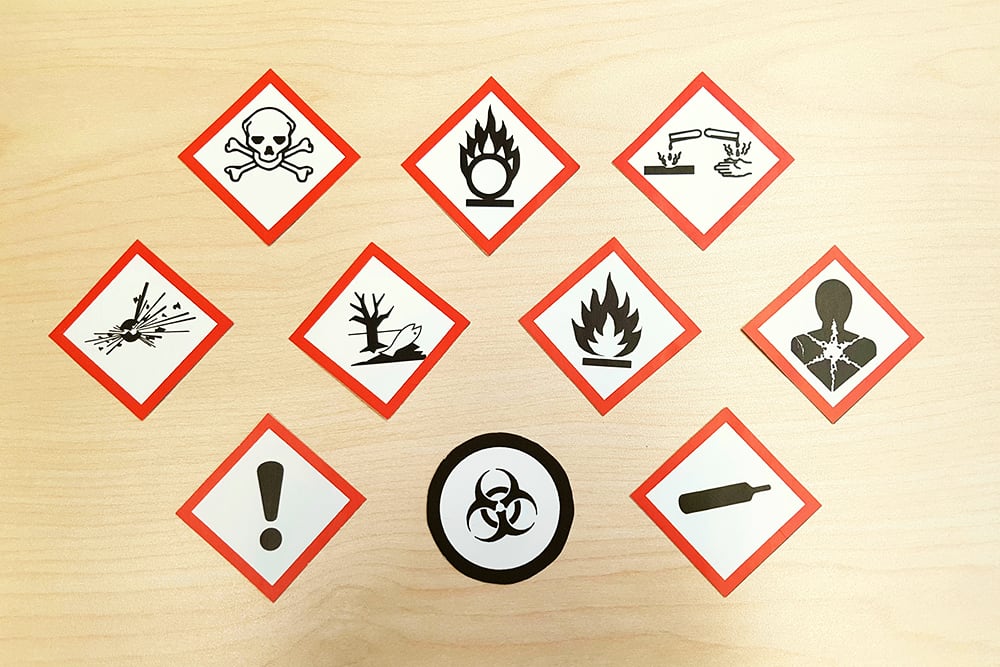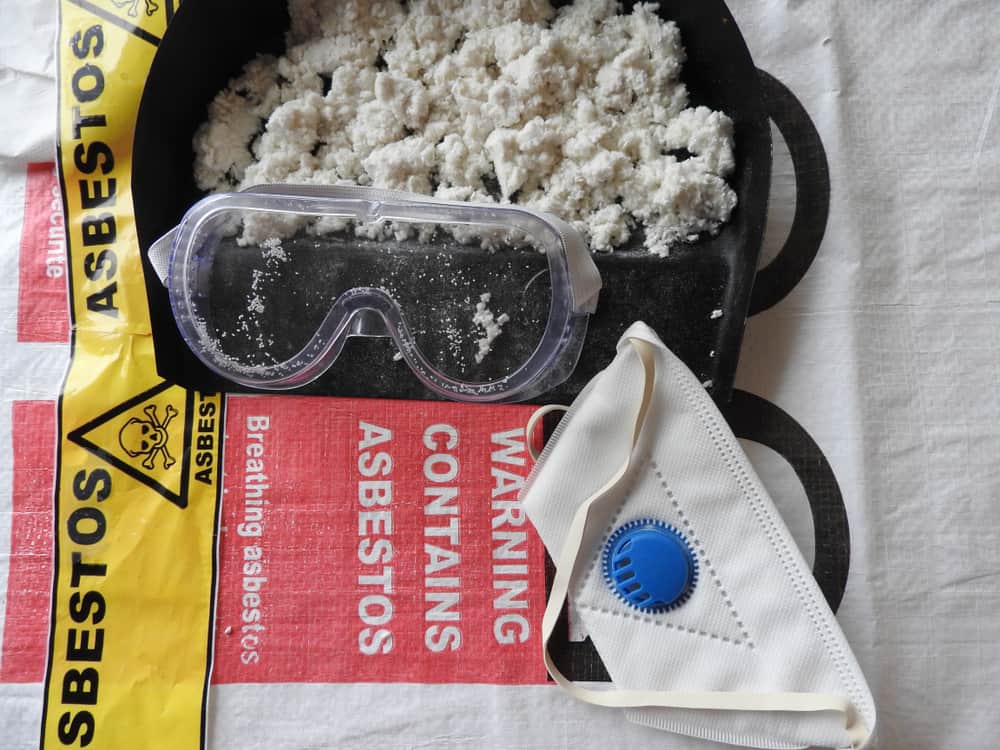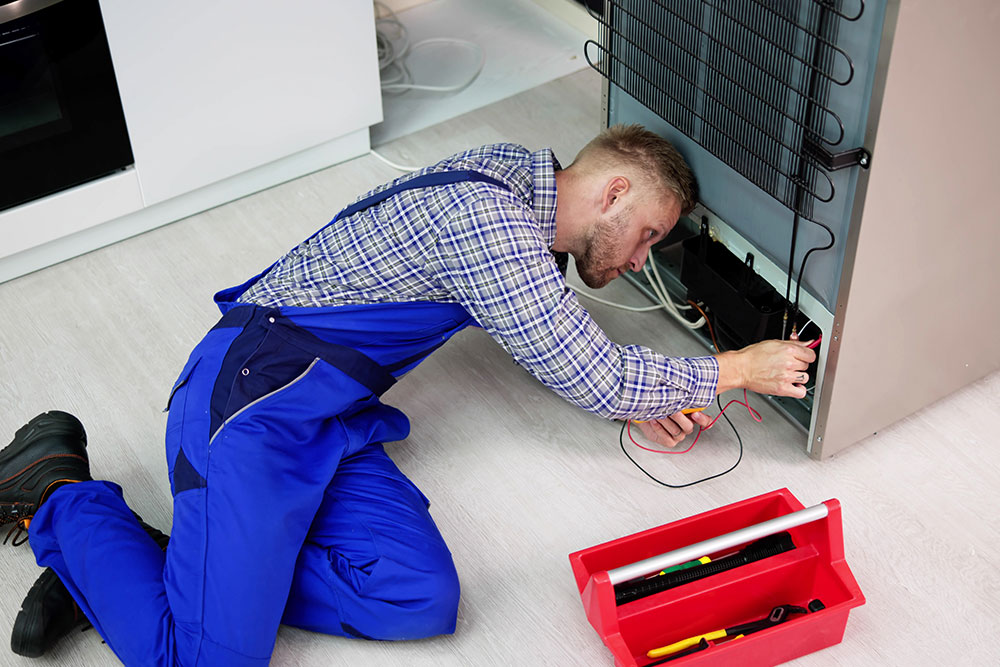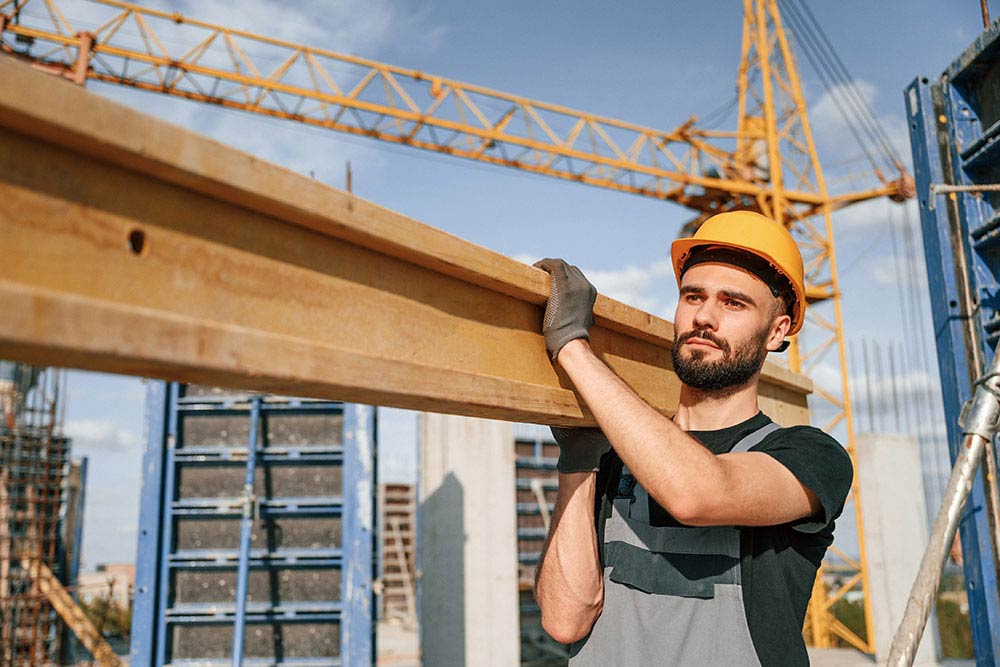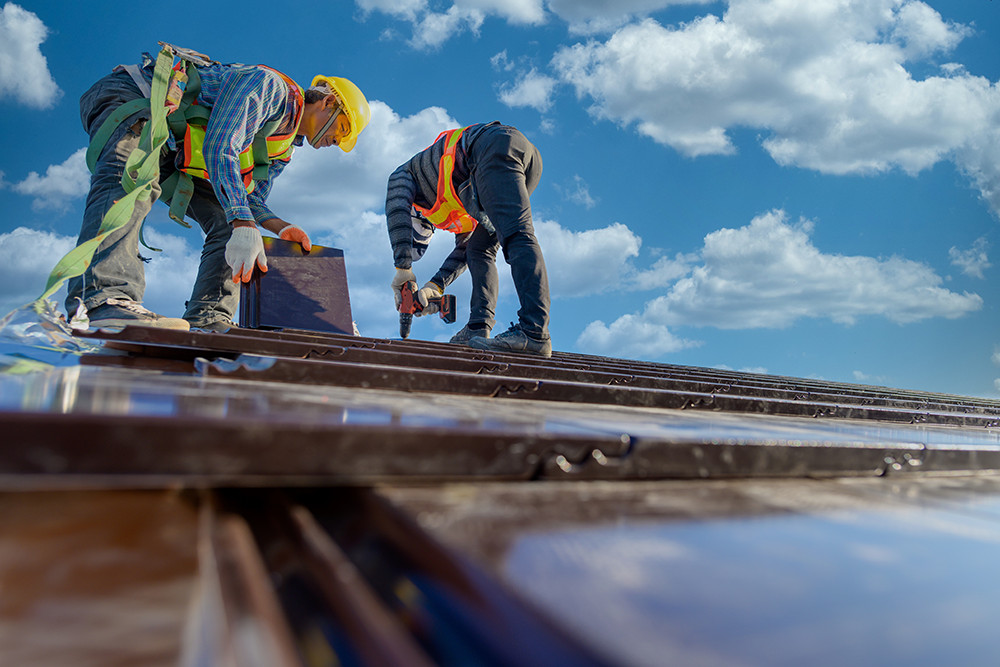
In Britain, working at height is the leading cause of workplace fatalities, and has been for some time, according to statistics from the Health and Safety Executive (HSE). It’s also a significant contributor to non-fatal injuries.
Due to the risk involved, employers have a legal duty to safely plan any working at height activity. The first step is to assess the hazards. But what are the hazards of working at height? This blog will help you identify them and how they can be managed.
What Is Working at Height?
The HSE definition of work at height is:
“Work in any place where, if there were no precautions in place, a person could fall a distance liable to cause personal injury.”
The most obvious examples include work on roofs, scaffolds or ladders, But you can still be working at height if you’re on the ground, for example, working near an open pit. If there’s a risk of falling and injuring yourself, it counts as working at height.
What Are the Risks of Working at Height?
Falls from height remain the single largest cause of workplace fatalities in Great Britain. In the year from April 2024 to March 2025, a total of 124 workers were killed in work-related incidents – over a quarter of those deaths (35) were due to falls from height.
Falls from height are also a significant contributor to non-fatal work injuries. In 2023/24, employer-reported falls from height accounted for around 8% of all such incidents.
Estimates from the Labour Force Survey paint a broader picture, suggesting around 37,000 self-reported injuries arising from falls from height, which translates to over 100 injuries per day.
To avoid these incidents in your workplace, you first need to understand the hazards of working at height.
Working at Height Training
Our Working at Height Training course explains the regulations, risks and safety measures of working above ground level. It provides employees and employers with awareness of their legal responsibilities and the necessary precautions to ensure work at height is safe.
Common Work at Height Hazards
A hazard is something that could potentially cause harm to people, as well as damage to property. Risk is different – it refers to the likelihood of that harm happening and how severe the outcome could be.
When working at height, hazards create the possibility of falling, while the level of risk depends on factors such as the potential fall distance, the surface someone would land on and the protections in place.
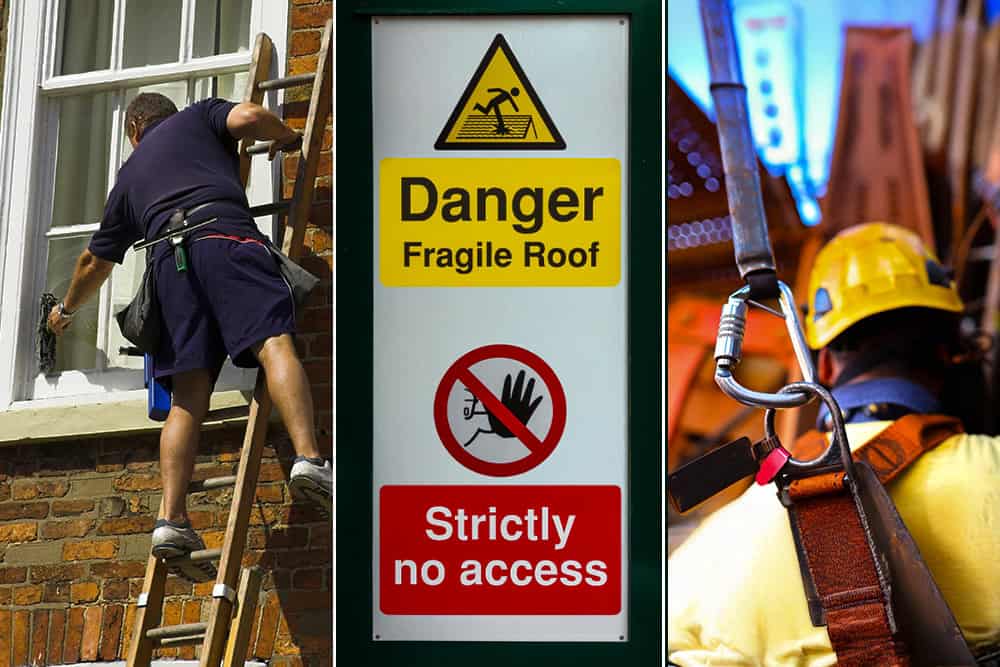
Some of the most common work at height hazards are:
Faulty Ladders
Broken steps and ladders are a leading cause of workplace accidents. If equipment is faulty or has been improperly repaired, it can fail suddenly. Depending on the fall distance, the consequences can be severe.
Overloaded Ladders
Exceeding the maximum safe working load of a ladder increases the risk of it falling over or collapsing. The load includes the weight of the worker using it and any equipment or materials they’re carrying.
Improper Ladder Positioning
If ladders are rested against unstable surfaces or objects, such as guttering, it will increase the chance of falling.
The HSE also advises the “1-in-4 rule”: the base of the ladder should be one unit out for every four units of height. For example, a ladder resting against the wall at a height of 4 metres should be set one metre out.
If the base is too close to the wall, the ladder can topple backwards. If it is too far away, the ladder may slip outwards.
Fall Protection Equipment Hazards
Workers at high heights should be fitted with fall protection equipment like harnesses and arrest lanyards. But this equipment can malfunction. It only reduces the risk of injury if it’s used correctly and properly maintained.
Fall protection equipment must be:
- Used in line with manufacturer instructions
- Regularly inspected and maintained
- Stored in a safe, dedicated space
Training about maintaining harnesses and arrest lanyards is available online from Human Focus.
Incorrect Equipment
Equipment can also present hazards if it’s not safe for the job.
For example, ladders should only be used for simple, quick tasks (no more than 30 minutes).
Strenuous work or work that requires you to be above ground level for longer than half an hour should never be done from a ladder. The potential to fall is too great.
Access Platforms
For lengthy tasks, access platforms are the safer alternative to ladders.
But because workers often use access platforms to reach higher areas, they could be near electrical masts and power cables. In these situations, there’s a risk of electrocution or exposure to radiation from mobile or radio masts. Adverse weather conditions are also an issue, which we’ll talk about shortly.

Fragile Working Surfaces
Many roofs have fragile surfaces that could easily collapse if they’re walked on. It may seem obvious that certain surfaces are fragile and there may be clear warning signs, but this isn’t always the case.
Falling Objects
Work at height accidents can also involve bystanders being hit by falling objects or equipment. Objects frequently end up falling from height as a result of poor work practices.
Examples include:
- Passing materials up a scaffold tower by hand
- Carelessness, such as poorly stacked materials that can be knocked over
- Poor handling, like throwing bricks along a scaffold
- Poor storage and housekeeping, for example, stacking pipes on a scaffold without a toe board
Housekeeping
A cluttered work area can also present hazards when using equipment. Poor workplace organisation can cause work at height equipment, such as ladders, to shift and lead to a worker falling.
Weather
The weather is another dangerous factor when working at height.
Strong winds may not be a problem at ground level, but once you’re in raised, exposed areas, it becomes much harder to keep your balance. Tools and materials can also be blown off and hit pedestrians walking below while work is carried out.
Ice and wet weather can also significantly increase the risk of slips or trips when working at height.
What the Law Requires for Safe Work at Height
The law requires employers to conduct risk assessments and identify measures required to ensure that work at height is carried out safely.
The Work at Height Regulations 2005 set out the hierarchy of controls:
- Avoid working at height where you can (e.g., use extendable tools from ground level).
- Prevent falls with collective protection like well-designed scaffolds, guardrails and edge protection if work must be carried out at height.
- Minimise the distance and consequences of a fall (e.g., safety nets, airbags or personal fall protection).
When choosing control measures, always prioritise collective protection (scaffolds, guardrails, nets, etc.) before relying on personal protection. The chosen control measures must be proportionate to the risk and suitable for the specific task.
It’s up to employers to decide what’s appropriate. If you’re unsure, you can appoint a competent person to help with your risk assessment and determine the required control measures.
Control Measures for Working at Height
Choosing Safe Access Methods
You must select the right access method for the work involved. Mobile elevating work platforms (MEWPs) or scaffolds should be used for long or physically demanding jobs. Tower scaffolds are better for tasks that require repeated access or where guardrails can be fitted.
A reminder: ladders and stepladders are only suitable for low-risk, short-duration tasks. Ladder work must be light and allow for constant three points of contact (such as two feet and one hand) with the ladder.
Edge and Opening Protection
If there’s a risk of objects falling and hitting someone, controls such as guardrails, mid-rails and toe boards should be fitted on all working platforms. Floor and roof openings must be covered and marked.
Where materials could fall, controls such as debris netting or brick guards should be installed. Tools and materials must also be secured with lanyards or similar equipment.
Regular Inspection and Maintenance
All work at height equipment must be safe to use and regularly checked. Workers must be trained to carry out pre-use checks on ladders, harnesses, scaffolds and platforms.
A competent person should also carry out formal inspections at set intervals and after any significant changes or incidents. In construction, the law requires working platforms to be inspected at least every seven days, with written reports kept.
Emergency and Rescue Planning
Accidents can still happen even with control measures in place. So, employers must plan for emergencies and rescues at height.
Rescue plans should identify the equipment, techniques and people involved. Drills are needed to test the plan and help nominated rescuers understand and rehearse their role.
Training Protects Against Working at Height Hazards
Employers are responsible for risk assessments and planning, but safety also depends on the awareness of the people carrying out the work. Workers must be able to recognise hazards for themselves and understand how to act safely when working at height.
Our Working at Height Training course builds this awareness. Delivered fully online and self-paced, it helps workers identify hazards and make safer choices whether they’re on a roof, a scaffold or simply using a step ladder in the office.
